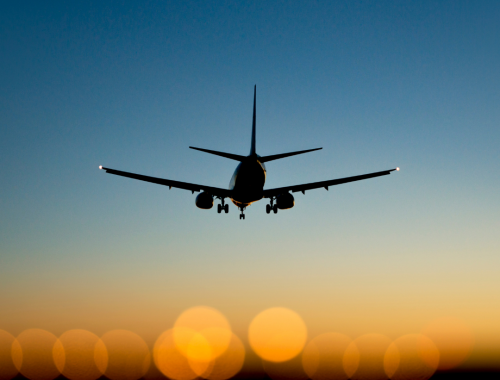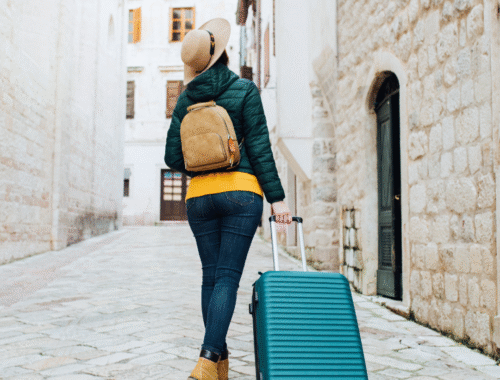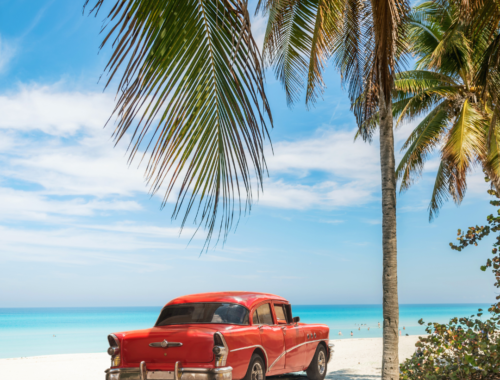
Packing Smart: Tips for Travelling Light and Efficiently
Travelling light can transform the travel experience, making it more enjoyable and less stressful. Many people struggle with the challenge of packing efficiently, often overloading their bags with unnecessary items. By choosing versatile clothing and essential accessories, travellers can significantly reduce their luggage weight and enhance their mobility.
Smart packing involves careful planning and prioritisation. Selecting items that serve multiple purposes is key to creating a compact travel wardrobe. This approach not only saves space but also simplifies decision-making during trips, allowing for a more seamless journey.
Learning to pack efficiently can also lead to cost savings and added convenience. Many airlines impose strict weight limits, and avoiding checked baggage can help bypass extra fees. Ultimately, packing smart allows for a more spontaneous and enjoyable travel experience.
The Fundamentals of Packing Light and Efficiently
Packing lightly and efficiently requires careful consideration of personal needs and preferences. By assessing the journey, selecting appropriate luggage, and understanding the advantages of a minimalist approach, travellers can enhance their mobility and potentially reduce costs.
Assessing Your Journey and Needs
Before packing, it is essential to evaluate the specifics of the trip. Factors such as destination, duration, and planned activities influence what to pack. For a weekend getaway, a limited wardrobe will suffice, while a longer journey may necessitate more thoughtful selections.
Creating a packing list helps identify necessities. It can be beneficial to categorise items into essentials, optional items, and luxury comforts. Consider multipurpose clothing, which can serve several functions, allowing the traveller to optimise space.
Choosing the Right Luggage
Selecting suitable luggage is crucial for efficient travel. While traditional suitcases are common, a sturdy carry-on bag often provides an ideal solution. Carry-on bags can fit in overhead compartments or under seats, facilitating easy access to belongings during the journey.
When choosing luggage, consider weight, size, and organisation. Lightweight options minimise the burden during transit, while compact designs allow for adherence to airline regulations. Features like compartments and pockets can aid in organisation, helping keep important items accessible.
Benefits of Travelling with Only a Carry-On Bag
Travelling with just a carry-on offers numerous benefits. First, it enhances mobility, allowing for quicker movement through airports and cities. Without the need to check luggage, travellers avoid lengthy waits at baggage claims.
Additionally, it can lead to significant cost savings. Many airlines charge for checked bags. Opting for a carry-on can eliminate these fees. Furthermore, having only essential items reduces stress and decision fatigue, enabling a more enjoyable travel experience.
Smart Packing Strategies and Organisation
Effective packing requires planning and organisation. By utilising specific tools and techniques, travellers can optimise their luggage space and streamline the packing process.
Creating an Effective Packing List
An effective packing list is essential for efficient travel. It helps prevent overpacking and ensures that no critical items are forgotten. Start by categorising items into sections: clothing, toiletries, electronics, and documents. This allows for easy tracking of necessities.
Tips for an effective packing list:
- Use digital tools or apps for easy adjustments.
- Prioritise versatile clothing that can be mixed and matched.
- Include a checklist for electronics and chargers to avoid last-minute rushes.
Regularly reviewing and updating this list with each trip can also improve efficiency in future travels.
Packing Cubes and Compression Bags for Space Saving
Packing cubes and compression bags are invaluable for maximising space in luggage. Packing cubes keep items organised and easily accessible, while compression bags reduce bulk, particularly for bulky clothing such as jackets and sweaters.
Benefits of using packing cubes:
- They enable easy categorisation, e.g. clothes, shoes, accessories.
- They help compress clothing, freeing up additional space.
Compression bags can reduce the volume of clothing by up to 50%. This is especially useful for long trips or when packing for multiple seasons.
Rolling Versus Folding: Maximising Space
When deciding between rolling and folding clothes, rolling often wins for space efficiency. Rolling minimises creases and allows for tighter packing in luggage.
Advantages of rolling:
- It utilises space more effectively in smaller suitcases.
- It can help keep clothes organised and prevent shifting during travel.
Assess personal preferences and garment types. Certain delicate items may still require folding, but for the majority, rolling provides a practical solution to travel light while keeping luggage organised.
Building a Versatile and Practical Travel Wardrobe
Creating a practical travel wardrobe is essential for maximising packing efficiency. Selecting versatile clothing pieces, neutral colours, and travel-sized essentials allows for easy mixing and matching while ensuring comfort throughout the journey.
Choosing Versatile Clothing Items
When selecting clothing for travel, focus on versatile pieces that work for various occasions. Items such as a simple black dress, tailored trousers, or a classic white shirt can be dressed up or down.
Consider two or three layering options, like a lightweight jacket or cardigan, to adapt to changing climates. Fabrics that resist wrinkling, like polyester blends or merino wool, are ideal as they maintain their appearance. Choose clothing that can be worn in multiple ways to enhance flexibility.
How to Create a Capsule Wardrobe for Any Trip
A capsule wardrobe simplifies packing by limiting choices to essential items. Start by determining the trip’s length and activities, then select 5-7 core pieces. Ideally, the wardrobe should include:
- 2-3 tops
- 1-2 bottoms
- 1 dress or outfit suitable for special occasions
- 1 outerwear piece
Ensure each item complements others in colour and style. This approach enables numerous outfits without excessive baggage. Incorporating accessories like scarves or belts can further diversify looks without taking up much space.
Selecting Neutral Colours for Mix and Match
Choosing neutral colours greatly enhances the versatility of a travel wardrobe. Colours such as black, grey, navy, and beige pair well with each other and facilitate easy mixing and matching.
Opt for patterns that blend well with solid colours to keep the wardrobe dynamic. A patterned scarf can add visual interest without the need for multiple statement pieces. This strategy allows for a cohesive look with fewer items, making it easier to coordinate outfits.
Travel-Sized Toiletries and Essential Items
Packing travel-sized toiletries is crucial for compactness and convenience. Many brands offer travel-sized versions of products, which save space and meet airline regulations. Essentials to include are:
- Shampoo and conditioner
- Body wash and lotion
- Toothbrush and toothpaste
- Makeup essentials
Utilising reusable travel bottles allows for personalisation while maintaining efficiency. Containers should hold just enough for the trip, preventing unnecessary bulk in the luggage. Always consider the destination’s amenities, which may affect the items needed.
Final Packing Tips and Mistakes to Avoid
Effective packing goes beyond just selecting clothing. It involves safeguarding essential travel documents, ensuring organisation during travel, and allowing space for souvenirs. Addressing these points can significantly enhance the travel experience.
Keeping Your Travel Documents Safe and Accessible
Travel documents such as passports, tickets, and insurance papers are critical. They should be stored in a designated, easily accessible spot. A travel wallet or a specific compartment within a backpack works well.
Using digital copies stored on a cloud service can provide an added layer of security. If originals are lost, having backups available can save time and stress. Always keep these documents separate from personal items to mitigate the risk of loss.
Consider using RFID-blocking wallets to protect against potential theft. Lastly, remember to double-check that all documents are valid and up-to-date before leaving home.
Leaving Room for Souvenirs and Unexpected Finds
When packing, it is beneficial to allocate extra space for souvenirs. Whether returning from a market or a local shop, having room ensures ease of transport.
Using compression bags can help save space while keeping items neat. She should also consider packing a foldable bag that can be used for additional purchases.
Prioritising lightweight items can prevent added bulk. For unexpected finds, bring small items that can be sacrificed if necessary. This strategy avoids stress while providing flexibility.
Top Travel Tips for Maintaining Organisation on the Road
Organisation during travel can significantly influence the experience. Use packing cubes to separate clothing and essentials. This method allows for quick access to items without rummaging through the entire bag.
Label compartments with stickers or colour coding to quickly identify items. It reduces time spent searching and enhances packing efficiency.
Staying organised means regularly reviewing content. After each destination, reassess to determine what is needed moving forward. It also allows them to remove unnecessary items, maintaining a lightweight load throughout the journey.
You May Also Like

What Is the Cheapest Month to Fly?
12 August 2022
How to Avoid Common Travel Mistakes: Essential Tips for a Smooth Journey
28 June 2025

